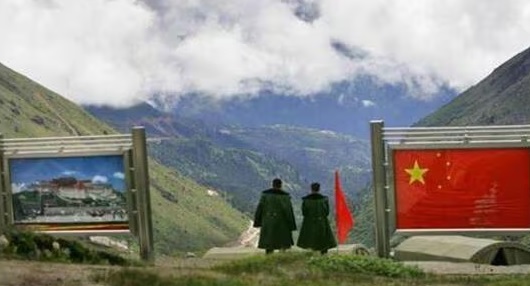China expands villages near Doklam, raises strategic concerns for India and Bhutan
The newly constructed villages in Bhutan’s western sector are strategically positioned in valleys or on ridges overlooking contested areas.
NATIONAL


Satellite imagery reveals that China has built at least 22 villages and settlements over the past eight years on territory traditionally considered part of Bhutan. Among these, eight villages have emerged near the strategically significant Doklam plateau since 2020, alarming regional security analysts.
The newly constructed villages in Bhutan’s western sector are strategically positioned in valleys or on ridges overlooking contested areas. These villages, including Jiwu—located on Bhutanese pastureland traditionally called Tshethangkha—are near Chinese military outposts, suggesting dual civilian-military utility.
China’s expansion in Bhutan’s territory raises concerns for India, particularly about the security of the Siliguri Corridor, a narrow land stretch connecting India’s mainland to its northeastern states. This corridor, also known as the "chicken's neck," is vital for India's connectivity and defense strategy.
Doklam gained global attention in 2017 during a 73-day standoff between Indian and Chinese troops when India intervened to halt Chinese road construction. Although troops withdrew after the standoff, recent satellite data indicates increased Chinese infrastructure development, including villages, roads, and patrol bases in the vicinity.
Observers and former diplomats argue that China’s actions violate a 1998 agreement between China and Bhutan, which committed both nations to maintaining peace and the status quo along their shared border. Ashok Kantha, India’s former envoy to Beijing, noted, “China’s construction of villages within Bhutanese territory disregards past commitments and creates a fait accompli on the ground, similar to its actions in the South China Sea.”
A report by Robert Barnett, a research associate at the School of Oriental and African Studies (SOAS), estimates that China has annexed 825 square kilometers of Bhutanese territory, relocating nearly 7,000 people into these newly developed areas. Since early 2023, the pace of construction has accelerated, with seven new settlements built and plans underway to upgrade three villages into towns.
China’s moves near Doklam are seen as a direct challenge to India’s security. The Doklam plateau is critical because of its proximity to the Siliguri Corridor. Experts suggest that Bhutan, bound by a treaty to respect India’s security concerns, may face increasing pressure to address the Doklam issue trilaterally, involving China and India.
Barnett remarked, “The larger issue is whether China’s use of pressure will push Bhutan out of India’s sphere of influence. Bhutan has already lost significant territory, and India was unable to prevent it.” He further highlighted the possibility of Bhutan opening diplomatic ties with China, including a Chinese embassy in Thimphu, which could lead to increased trade and influence.
The developments near Doklam add to tensions between India and China, which have been strained since the 2020 military standoff in Ladakh. Although disengagement efforts at certain friction points have been successful, experts believe that China’s incremental territorial advances in Bhutan reflect a broader strategy of regional dominance.
